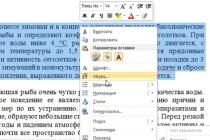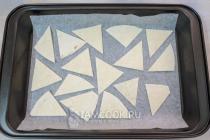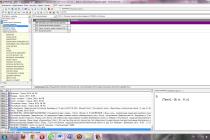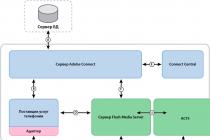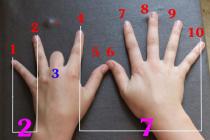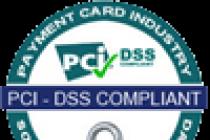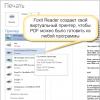The desktop background does not have to be monochrome at all, you can use pictures as a background. Select link Change desktop background(Change the desktop background) in the control panel to open the settings dialog (Fig. 16.8).
Rice. 16.8.
You can change the desktop background by defining a wallpaper, or by specifying a custom pattern that will fill the desktop. The background picture is graphic file displayed on the desktop surface as its background. You can use ready-made drawings or create your own. Pictures supplied with Windows are selected from a list. If you want to use your own drawing, use the button Overview(Browse) to indicate where it is located.
If the size of the picture differs from the size of the desktop, then in the drop-down list Display(Position) you can choose a solution to this problem. You can display the picture in the center, stretch it to full screen, or multiply it to cover the desktop with a repeating pattern. You can also choose a background color for your desktop by selecting it from the appropriate list.
Click the button Customize your desktop(Customize Desktop) to open a dialog for additional customization of desktop settings (Fig. 16.9). Using a tab General(Common) of this dialog, you can change the image of some of the required icons located on the desktop, and even remove the icons from the screen altogether. By checking and unchecking the boxes at the top of the dialog, you are placing and unchecking the corresponding icons on the desktop. By selecting a picture of one of the icons, clicking on it with the mouse, you can change it. To do this, press the button Change Icon(Change Icon) and select a new icon in the dialog that appears. The lower part of the dialog is for configuring the Desktop Cleanup Wizard. If you check the box at the bottom, then every sixty days a wizard will be launched, which will clean up the desktop from garbage. Any badges you haven't used for a long time will be moved to special folder icon that will appear on the desktop. To start cleaning immediately, click Clear now(Clean Desktop Now). With this procedure, you can clean up your computer desktop by hiding unnecessary icons.

Rice. 16.9.
The second tab of the dialog allows you to select a Web page on the Internet as the desktop, local network or on your computer. When finished, press the button. OK, to close the dialog. Also press the button OK, to close the settings dialog and return to the task selection in the control panel.
Select link Select screensaver(Choose Screen Saver) in the control panel. The settings dialog will appear, open on the screensaver settings tab, often called screensaver, from the English word Screen Saver (Fig. 16.10). As you can see, you could go to this tab without exiting the setup program. A screensaver is an image that appears on the screen if you are not using your computer for a while, but it is not turned off. This dialog allows you to customize the look of the splash screen. You can select a dynamic image from the list and set the time intervals after which the screensaver will be turned on. The splash screen can be viewed in the preview area, and if you want to view the splash screen enlarged to full screen, use the button View(View). The screensaver will disappear when you start using your computer, for example, move your mouse or press a keyboard key. You can set a password so that only you can remove the screensaver from the screen. In addition to screen saver settings, this tab allows you to configure the monitor's energy-saving functions.

Rice. 16.10.
An interesting feature of Windows XP is the use of pictures stored in the folder as a splash screen. My drawings(My Pictures). In the list Screensaver(Screen Saver) an item appears to indicate the slide show from that folder. You can put in a folder My drawings(My Pictures) any of your images. When you select a slide show from the screensaver list, the pictures will be displayed sequentially on the screen.
You can adjust the display duration and other parameters by clicking the button Customization(Settings). Click on the shortcut Registration(Appearance) to display the corresponding tab of the customization dialog (Figure 16.11). You have the ability to customize the look, color, and size of fonts for window titles and menu command names. But customizing all the design elements is a rather laborious task.

Rice. 16.11.
To facilitate customization, the concept of a skin is introduced and there are a number of pre-configured layouts. You can choose a ready-made design scheme, or you can create it yourself. In addition, you can modify an existing circuit. To save the design scheme, use the button Save as(Save As). The diagram view can be viewed in the preview field, which is a drawing of a set of windows with all the attributes, so that when they change, you can quickly observe these changes. When finished, press the button. OK, to close the dialog and return to the task selection in the control panel.
The ability to customize the desktop in Windows 10 allows you to make the operating system more personal, and it can even help you be more productive. Thus, today we are going to take a look at some of the settings that everyone should know in order to improve their experience with the OS.
Perhaps one of the most strengths Windows is the ability to customize almost everything; users can customize the desktop with available options in operating system and even through settings in the registry and policies. You can fine-tune it after installation.
Customize the Start Menu just the way you like it
The Start menu in Windows 10 is very similar to what you used in Windows 7. However, it also combines parts of the Start screen from Windows 8.1, and this is one of the first features you'll want to customize.
As with Windows 8.1, Windows 10 offers the ability to drag and drop Live Tiles in any way you like. If you want to name a group, just right-click at the top edge of the group and name it whatever you like.

In Live Tiles mode, you can view the latest information without having to open the app. But sometimes you may not like or need to see certain information. While you cannot turn off this feature globally, you can right-click on each tile and select Turn Off Live Slices.
It talks about working in the operating room Windows system(on the example of XP and 7 versions), text editor Word 2010 and other applications that every user needs: archivers, antiviruses and programs for watching videos and listening to music (Winamp, QuickTime Pro). Much attention is paid to work on the Internet. Describes programs for viewing Web pages, about e-mail as well as various useful applications for networking - file download managers, ICQ, Windows Live Messenger, MSN and many others. The second edition deals with the new OS - Windows 7, as well as latest versions applications for users.
For novice PC users.

Here you can customize the color scheme of the windows on your system. Click on a color to select it. Using the slider located just below, you can adjust the brightness of the color. You can also mix colors: open the option Show color setting and use the sliders below to adjust these colors. To open the classic window of color settings (Fig. 2.101), click on the option Open properties of classic appearance to select other options. Here you can also choose one of the design options from the list. In the window at the top, you can see how the windows and titles will be displayed.
If your machine is not very powerful, I advise you to turn off the Aero effect or even switch to the classic one. windows view- this way Vista will use significantly less system resources.

? Desktop background- here you can set the wallpaper for your desktop. Compared to Windows XP, the desktop background selection settings have been greatly simplified. In the window that opens (Fig. 2.102), click on the picture you like, and it will be used as a background on the desktop. For convenience, all drawings are divided into several categories, and you can choose an image to your liking. The category of pictures is selected from the drop-down list at the top. At the bottom, you can choose how the pictures are displayed. To add a new image to the collection, click the button Overview and in the window that opens, select an image.

? Screen saver- Selecting this item opens a window for setting up the screensaver (Fig. 2.103), which appears when you do not work at the computer for a long time. You can choose a screensaver from the dropdown list. To view the splash screen, press the button View, button press Options brings up the screen saver settings window. The time when the screen saver is activated is also set here. Clicking a link Change power options brings up the computer power settings window, where you can set power parameters.

? Sounds- setting up sound effects. This window is also called from the control panel. For more information on this setting, see sect. 2.6.7.
? Mouse pointers- in this window, you can configure the mouse pointer and other mouse parameters. For more information on customizing the mouse, see sect. 2.6.7.
? Theme- when this option is selected, a window opens Theme options(fig. 2.104). Here you can set the option for displaying the interface in Vista - it can be classic or Windows Vista (the latter, however, is installed by default).

? Display options- when this option is selected, a window of the same name opens (Fig. 2.105), where you can set monitor settings, screen resolution and color rendition.

To change the screen resolution, drag the slider Permission, the resolution will be displayed just below. Button press Additionally calls the window more detailed settings monitor and video card (Fig. 2.106). Here you can reinstall drivers (if needed) and check hardware information.

In the tab Monitor(fig. 2.107) it is possible to set the refresh rate of the screen.

Also in the window Personalization(Fig. 2.92) there are two more options to pay attention to - and Change font size... Let's consider them in more detail.
? Change desktop icons- when this option is selected, a window opens Desktop icon options(fig. 2.108).

At the top of the window, you can specify which icons are displayed on the desktop. If you want to remove any icon from the desktop, uncheck the box next to its name and click Apply for the changes to take effect. Also here you can change the icons for the Computer, basket, network environment, browser and document folders. To do this, select the icon you want to change and press the button Change Icon... In the window that opens (Fig. 2.109), select any icon you like.

? Change font size- this option calls the window Scaling(Fig. 2.110), in which you can change the font size.

If you think the font is too small, you can enlarge it. To do this, check the radio button Large scale (120 dpi)... Button press Special scale brings up a dialog box Scale selection(fig. 2.111). Here you can adjust the font size yourself. The increase is shown as a percentage. The indicator 200% doubles the text, 150% - one and a half.

Desktop customization in Windows 7
In Windows 7, the desktop setting is divided into three items - Screen resolution, Gadgets and Personalization... To open the settings menu, right-click anywhere on the desktop. We are interested in the last three items in the menu - they are responsible for the settings.
When choosing an option Screen resolution, the window for setting the resolution opens (Fig. 2.112).

Here in the drop-down menu you can adjust the screen resolution. If two monitors or a monitor and a TV are connected to the computer, then you can choose for which screen to adjust the resolution.
If you are satisfied with the screen resolution, but at the same time the test and icons are too small or, conversely, large, then here you can also adjust it. Click on the link Make text and other elements larger or smaller. In the window that opens, you can change the size of text and other elements on the screen. If you have good eyesight, then leave the option - 100%. If you are having problems reading text and the icons seem too small, then you can choose the options Average 125% or Large 150%.

To install a gadget, download it and then double-click to start the installation. After installing the gadget, you will see it in the settings window. To make the gadget appear on the desktop, right-click on it and select Add... You can also double-click on the desired gadget in the properties window to display the gadget on the desktop.
To remove a gadget, move the mouse pointer to it and click on the cross that appears above the gadget. Notice two more options below the close icon. The second option is to open the gadget settings window. The settings can be very different: if this is a news gadget, then from which sites it receives information, if the calendar, then in what form it is displayed, etc. Under the settings option there is a special field with which the gadget can be dragged - click on the field , and then hold down the mouse and drag the gadget to the desired part of the desktop.
The third item of the desktop settings - Personalization... When you select this item, a window of the same name will open (Fig. 2.93). Here you can customize your desktop themes, turn the screensaver on and off, and change the Windows icons and theme.
Most of the window is occupied by a list of themes that you can set as screensavers for your desktop. Most themes periodically change the desktop image. If you don't want to admire flowers or landscapes, you can install the Windows 7 theme or the blue desktop. However, this is your choice.
After you've upgraded your device to Windows 10, the desktop will open in front of you.
Some users just don't know what to do now. Just calm down and consider everything. Everything is done in Windows 10 so that you can work on it from the very first second. Microsoft applications, which I have already written about, will allow you to work at a computer.
I’m going to tell you how to customize your device more efficiently.
Personalizing your desktop

It is unlikely that there are many Windows users that do not change the design of the operating system interface in any way - at least everyone on the desktop probably changes the wallpaper. We all want to see the interface tailored exactly for ourselves. Windows 10 makes it easy to customize the look of your desktop. To access the personalization settings, right-click anywhere on the free space on the desktop, and select Personalization from the context menu. The personalization settings screen will open. You can also open by going through the path Options - Personalization.

By clicking on the option Background, you will be able to change the background of the Desktop. You can set the standard Windows 10 background or choose your own folder with images. I always choose my photos, but sometimes I dilute them with extraneous images. If you have large selection desktop wallpaper, it is convenient to use them as a background in a slide show. To do this, you just need to select the "Slide Show" item in the "Background" drop-down list, and then specify the path to the folder with the image using the "Browse" button. For images in the slideshow, you can also choose a suitable position, and of course set the frequency of their change.
In chapter Colors you can easily change the background color. The interface of Windows 10 is multicolored, the background colors are rich, warm and with a varied palette. By changing the background color, you can automatically change the color of the Start Menu and Notification Center.

Chapter Lock screen will allow you to set a background screen saver that will greet you when you turn on your device. Here you can also set your own image. To do this, just click on Overview and any of your photos will be displayed on the Lock Screen.

Recently, there have been reports on the Internet that Microsoft has begun to place advertisements on the Lock Screen. It is easy to disable it if you disable the setting “ Display fun facts, jokes, tips and other information on the lock screen. " Then advertising will no longer bother you. Below you can select a list of applications that will be displayed on the Lock Screen. For some it is very convenient after using smartphones.
Chapter Themes will allow you to install, as you might guess, various themes on your Desktop.  Pressing Theme options, you get into Personalization, which you saw in Windows 7 / 8.1. Here is your service Windows themes 10, and you can also add your own. You will also find related settings options here.
Pressing Theme options, you get into Personalization, which you saw in Windows 7 / 8.1. Here is your service Windows themes 10, and you can also add your own. You will also find related settings options here.

How to find a cool theme for your desktop and lock screen?
If you want to find cool themes and backgrounds for your Desktop and Lock Screen, then it's very easy to do by clicking on Other topics on the Internet. You get to Gallery personalization, where you will find a theme or wallpaper for every taste and subject. They can be easily downloaded and installed on your device without any restrictions. For those who want to download without delving into the settings, here is a direct link: http://windows.microsoft.com/en-us/windows/themes?ocid=w8_client_themes. Let your device delight you with a beautiful theme.
How do I customize the Start menu?
Windows 10 re-introduced the Start menu, which this time is a mixture of the Start that was in Windows 7 and the Start screen in Windows 8. At the same time, the lack of such a menu in previous version The OS was probably the most frequently mentioned flaw among users.
The new Start menu is easy to navigate. By default, the Start menu is a panel divided into two parts, where a list of frequently used applications is displayed on the left (by right-clicking on which you can prevent them from being shown in this list).
There is also an item for accessing the "All applications" list, which displays all your programs, sorted alphabetically, items for opening the explorer (or, if you click on the arrow next to this item, for quick access to frequently used folders), settings, shutdown or restart the computer.

In the upper right corner you will see the username, by clicking on which you can configure account, exit or lock the computer.

On the right side there are active application tiles and shortcuts for launching programs, sorted by groups. With the right click, you can resize, disable updating tiles (that is, they will become not active, but static), remove them from the Start menu (item "Unpin from Start") or uninstall the program itself corresponding to the tile. By simply dragging the mouse, you can change the relative position of the tiles. You can also create application groups.

The basic settings of the Start menu you can find if you follow the path Options-Personalization-Start or in the old fashioned way, by clicking on the Desktop with the right mouse, in the section Personalization.
Here you can turn off the display of frequently used and recently installed programs, as well as a list of transitions to them (opened by clicking on the arrow to the right of the program name in the list of frequently used ones). If you have touch screen, you can enable the parameter " Open elementary screen v fullscreen mode", And the Start menu will look almost like the start menu. Windows screen 8.1, which can be handy for touch screens.

You can also choose what you want to display on the Start menu. To do this, open the parameter " Please select, what kind folders will be be displayed v menu Start". This will help you use the Start menu more efficiently. 
Be sure to also choose a color for the Start Menu display to make it more consistent with your vision and enjoyable to use. I am personally tired of the dullness.

The Start button retains one specific feature from Windows 8.1: right-clicking on it brings up a familiar menu from the previous version of the operating system. I use it a lot because it is very easy to access some settings through it.

By the way, for those who did not like the new Start menu in Windows 10, there is an opportunity to use free program Classic Shell, StartIsBack and other similar utilities to bring back exactly the same Start as it was in Windows 7.
Why the button "Search on the Internet and in Windows "?

The search box will be one of the first things you'll notice when you start using Windows 10. It allows you to search both on the Internet and on your computer, and is located in the taskbar next to the Start menu, where we usually place shortcuts for quick access. to folders, programs or drives.

I use this button a lot. Knowing the name of the program I need, I can easily find it without rummaging through the laptop's settings.
I don’t deny the fact that some people don’t like this button. Either they have little space on the taskbar, or it annoys them, or their knees are trembling in front of Cortana, or their religion does not allow them to use it? There is a way for them how to hide this interesting button.

To do this, right click on Taskbars, find Search and press Is hidden. The hated search button will disappear from the taskbar. If you want to return it, you will have to follow the same path, but instead of the option Is hidden click on the Show search icon or Show search box.
Why virtual tables in Windows 10?

The Windows 10 operating system is equipped by default with one very useful function- the ability to support multiple virtual desktops. This function has been used in Mac OS X, Linux for several years and has proven itself very well.
What are virtual desktops for? To optimize the user experience, or, more simply, for convenience and comfort. For example, when there is a dense and intense work on a PC, many applications are often open: a calculator, a browser, Word document, media files, etc. In such cases, when several windows are open, it is easy to get confused when switching from one object to another.
With the help of virtual desktops, work can be organized more conveniently and productively. It would be like having several computers and monitors at hand. One would open a browser and a Word document, the other would have a calculator and organizer, the third would have a media player, etc. By the way, an additional desktop is useful at work - for hiding content from superiors.
How to create them and how to use them? To organize the work with programs and windows in certain directions, preferences, click on a special button in the "Taskbar", which includes the "Task view" mode.

Thumbnails of all running applications, where you can select the program you need at the moment. In the lower right corner there is a "Create Desktop" icon, by clicking on which a new virtual desktop will appear.

If you go to it, then there will be no open applications - as if you just turned on the computer. Now you need to go to the first desktop, and from the shown thumbnails drag the necessary program to the second desktop. It is possible that in the newly created desktop, open desired application... Those. complete freedom of creativity. The number of desktops is unlimited. When you close each desktop, the applications open in them are automatically moved to the adjacent desktop. The only thing missing is the ability to put a password on each desktop.
You can also customize what is shown on the taskbar when you open virtual tables. To do this, open Options-System-Multitasking.

Hotkeys for virtual tables
For those who want to more effectively and quickly switch between virtual tables, there is a set of hot keys.
- Win + Tab- opens access to all working folders and applications
- Win + Ctrl + D- a new Windows desktop is created
- Win + Ctrl + F4- the current Windows desktop is closed
- Win + Ctrl + Left or Right Arrow- switching between Windows desktops
Using virtual desktops makes the user experience much easier. Perhaps not everything will be clear the first time, but you just have to understand the principle of work - things will run ahead of you.
How to customize Action Center in Windows 10
In the new operating system from Microsoft, the Notification Center appeared for the first time, familiar to everyone who has used modern smartphones for at least one day.
Using the Action Center in the Windows 10 operating system, many system applications as well as installed from Windows Store and many other programs have the ability to display various notifications on the screen. Such information is distributed according to the display time, as well as according to the degree of its importance and is displayed in the lower right corner of the screen.

If you expand the Notification Center, then at the bottom you can see buttons for quick activation different modes and take the necessary actions. These panels can be edited and selected what you want to display. To do this, let's go the way Parameters-System-Notifications and actions and we ourselves choose what and from where we will come to the Notification Center.

If, nevertheless, you do not need it or are simply tired of it, then you can turn it off. Ibid in Notifications and actions there is an option "Turn on and off system characters". Open it and simply turn off this function. You can completely disable the Action Center, but this is already using the registry. In inexperienced hands may harm the operation of the device.

In conclusion, I would like to wish you pleasant work with your device. Customize it to your liking and preference. Let working at a computer on Windows 10 bring you joy and a lot of positive emotions.
Hello!
Every computer user (especially the female half :)) tries to give his Windows originality, to customize it for himself. It's no secret that basic settings not everyone likes it, and besides, they can even slow down your PC if it is not very powerful (by the way, such effects include the same Aero).
Other users want to disable various graphical bells and whistles. they are simply not used to them (after all, earlier in Windows 2000, XP this was not all. For example, I am generally quite ascetic in this, but other users have to help ...).
So, let's try to slightly change the appearance of the seven ...
How do I change the theme?
Where can I find many new topics? At the office. the Microsoft website has a sea of them: https://support.microsoft.com/ru-ru/help/13768/windows-desktop-themes
Theme - in Windows 7, a theme is everything that you see. For example, a picture on the desktop, window color, font size, mouse cursor, sounds, etc. In general, all display and sound effects are related to the selected theme. A lot depends on it, which is why we will start with our OS settings.
In order to change the theme in Windows 7 you need to go to personalization settings... To do this, it is not necessary to enter the control panel, you can simply right-click anywhere on the desktop and select the item "personalization" from the menu (see Fig. 1).
There are a lot of other topics on the Internet, just above, under the heading of this subsection of the article, I gave a link to the office. Microsoft website.
By the way, important point! Some themes may even cause your computer to slow down. For example, themes without the Aero effect (I talked about it here :) run faster (as a rule) and require lower computer performance.
How to change the background, wallpaper on the desktop?
Large selection of ready-made wallpapers: https://support.microsoft.com/en-us/help/17780/featured-wallpapers
The background (or wallpaper) is what you see on your desktop, i.e. background picture... It is this picture that has a very big influence on the design. For example, even the strip of the taskbar changes its hue depending on which picture was selected for the wallpaper.
To change the default background, go to personalization (note: right-click on the desktop, see above), then at the very bottom there will be a link "" - click it (see Fig. 3)!
By the way, the background on the desktop can be displayed in different ways, for example, there may be black stripes along the edges. This happens because your screen has a resolution (more about this here -). Those. roughly a certain size in pixels. When it does not match, then these black stripes are formed.
But Windows 7 may try to stretch the picture to fit your screen (see Figure 4 - bottommost red arrow: Padding). True, in this case, the picture may lose its spectacularity ...
How do I resize desktop icons?
Resize icons- very simple! To do this, right-click anywhere on the desktop, then select the "view" menu, then select from the list: large, medium, small (see Fig. 5).
How do I change the sound design?
To do this, you need to open in control panels Personalization tab, and then select Sounds.
Here you can change the usual soundtrack for various others: landscape, festival, heritage, or turn it off altogether.
How do I change the screensaver?
Also similar to the personalization tab (note: right-click anywhere on the desktop), at the bottom we select the screen saver item.
How do I change the screen resolution?
Option number 1
Sometimes you need to change the screen resolution, for example, if the game slows down and you need to start it with lower parameters; or check the operation of a program, etc. To do this, right-click on the desktop, and then select Screen Resolution from the pop-up menu.
Option number 2
Another way to change the screen resolution is to configure it in the video drivers (AMD, Nvidia, IntelHD - all manufacturers support this option). Below, I will show how this is done in ItelHD drivers.
First, you need to right-click on the desktop and select " Graphic characteristics"(See fig. 12). You can also find the video driver icon and go to its settings in the tray, next to the clock.
Rice. 12. Graphic characteristics
Rice. 13. Resolution, section display
How to change and customize the START menu?
To customize the START menu and taskbar, right-click on the START button in the lower left corner of the screen, then select the properties tab. You will be taken to the settings: in the first tab you can customize the taskbar, in the second - START.
It probably doesn't make much sense to describe each checkbox in the settings. It is best to customize for yourself experimentally: if you do not know what the checkbox means, turn it on and see the result (then change again - look, you will find what you need by typing :))..
Configuring the display of hidden files and folders
Here, it is best to enable the display of hidden files and folders in the explorer (many newbies get lost and don't know how to do it), as well as showing file extensions of any file types (this will help avoid some types of viruses that disguise themselves as other types of files).
It will also allow you to know for sure what file you want to open, as well as save time when searching for some folders (some of which are hidden).
To enable display, go to control Panel, then to the tab design and personalization... Next, look for the link “ Show hidden files and folders»(In the explorer settings section) - open it (fig. 17).
- uncheck the box next to “ hide extensions for registered file types«;
- move the slider to show hidden files, folders and disks ”(see Fig. 18).
Desktop gadgets
Gadgets are small information windows on your desktop. They can notify you about the weather, incoming emails, show the time / date, exchange rates, various puzzles, slides, CPU utilization indicators, etc.
You can use the gadgets installed on the system: go to control Panel, type "gadgets" into the search, then you will have to choose the one you like.
By the way, if the presented gadgets are not enough, then you can additionally download them on the Internet - for this there is even a special link under the list of gadgets (see Fig. 19).
Important note! A large number of active gadgets in the system can cause a decrease in computer performance, slowdowns and other delights. Remember that everything is fine in moderation and do not clutter your desktop with unnecessary and unnecessary gadgets.
That's all for me. Good luck to everyone and bye!


